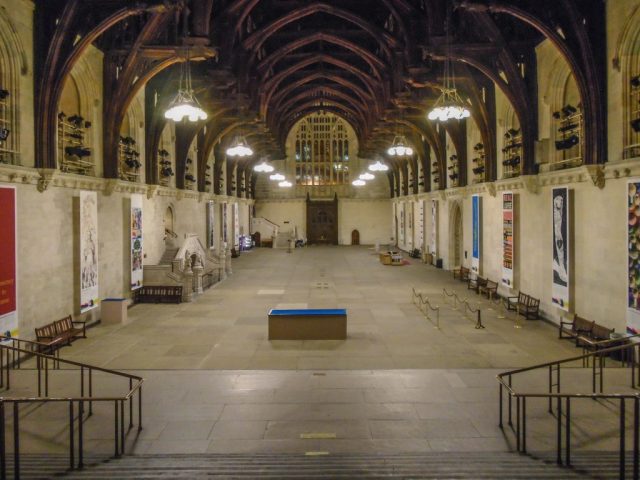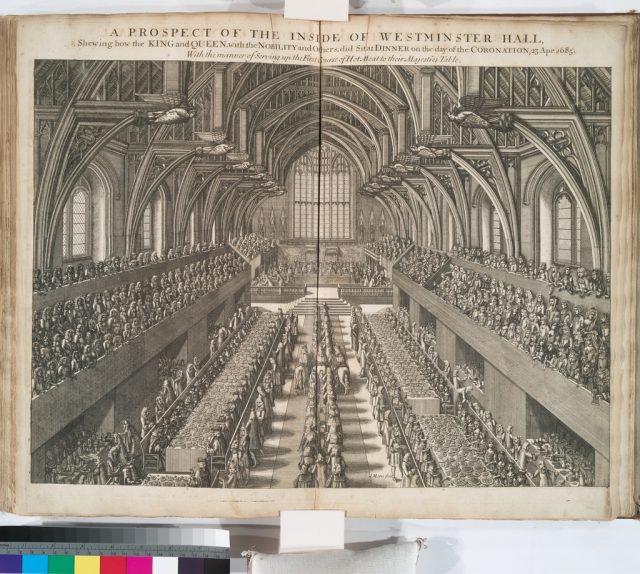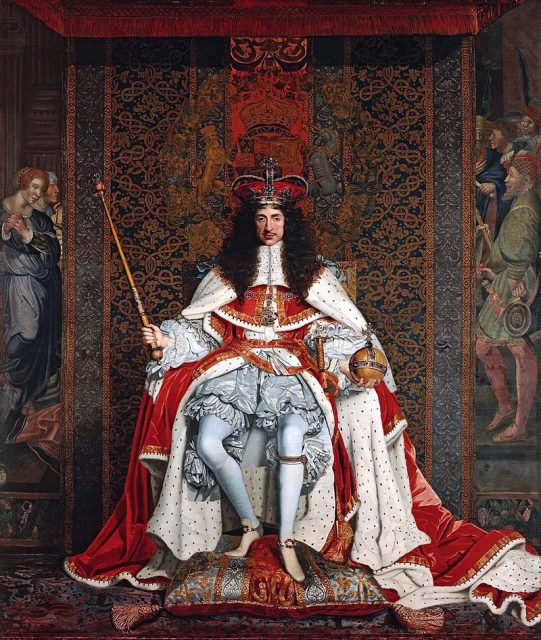A “secret” passageway dating back to the 1600s has been found in the British Parliament. They say a lot goes on behind the scenes in politics – this find proves that in more ways than one!
Who built it? When Charles II became King in 1660, the tunnel was created in the House of Commons for a procession in 1661. He and his subjects would have marched through to Westminster Hall – the oldest building in Parliament – from the original Commons chamber for a coronation banquet.

“For centuries, the entrance would have been used by great political luminaries,” writes Parliament’s website, “such as the diarist Samuel Pepys, the first de facto Prime Minister of Great Britain – Robert Walpole – and arch-rivals Charles James Fox and William Pitt the younger.” From further afield, Benjamin Franklin is believed to have used the tunnel.
Not exactly low profile, and experts were certainly aware of the regal passageway – a brass plaque acknowledges it was there. However, many thought it had been sealed off during the second world war.
Turns out a doorway existed under everyone’s nose all along. The news came to light thanks to substantial renovation work currently being undertaken at Westminster. As part of this project, a team of historians at the Historic England Archives in Swindon uncovered hitherto-unknown details among a raft of 10,000 documents.
Plans showed that in 1950 another door had been installed in the cloister’s wood paneling. This miniature access point was so subtle people mistook it for a utility cupboard! The door went unnoticed for 70 years until expert Dr Liz Hallam Smith stumbled on the plans at Swindon.
A trip to Westminster confirmed the find. “As we looked at the paneling closely, we realised there was a tiny brass key-hole that no-one had really noticed before,” she says, quoted by the BBC. Once a locksmith had overcome the tricky task of getting the “cupboard” open, cobwebs were blown away in what was revealed to be a small stone chamber.

Surprisingly, the passageway’s original door hinges were inside. Analysis of the wooden beams across the chamber’s ceiling confirmed its age. The beams “date back to trees felled in 1659—a timeline that falls in neatly with Charles II’s official crowning” writes Smithsonian.com.
But the eye-raising discoveries didn’t end there. A more modern touch in the shape of an Osram bulb had been installed, and what’s more it still worked! Yet history wasn’t done yielding its secrets. Historic workmen’s graffiti from 1851 was still intact on the wall. “It’s quite incredible how this writing has survived and can be read so easily, despite having been scribbled in pencil,” comments Estates Historian Mark Collins to the Parliament website.

What was graffiti like in the 19th century? “This room was enclosed by Tom Porter who was very fond of Ould Ale” reads one example. These scrawls belong to the “Real Democrats”, part of the Chartist movement who were assisting noted architect Sir Charles Barry. Following a fire in 1843, Barry had been tasked with the Palace’s restoration work.
“Charles Barry’s masons were quite subversive. I think these ones were being a little bit bolshie,” Dr Hallam Smith told the BBC, “but also highly celebratory because they had just finished the first major restoration of these beautiful Tudor cloisters.” In addition to further research, historians are attempting to trace descendants of now-famous laborer Tom Porter and co.
The find contradicts what’s inscribed on the brass plaque, which not only mentions the wrong King (Charles I) but claims the passageway was accessed as the monarch “attempted to arrest five MPs”.
Related Article: Eight Great Secret Rooms & Passageways You May Not Have Heard Of
The key plans are to be digitized for posterity. Quoted by Parliament’s website, recently-elected Speaker of the House Sir Lindsay Hoyle describes the revelation as “incredible”, adding “I am so proud of our staff for making this discovery and I really hope this space is celebrated for what it is: a part of our parliamentary history.”
“To say we were surprised is an understatement,” comments Mark Collins. “The mystery of the secret doorway is one we have enjoyed discovering – but the palace no doubt still has many more secrets to give up.”
With much renovation to come, who knows what secrets this ancient seat of democracy might disclose…?
